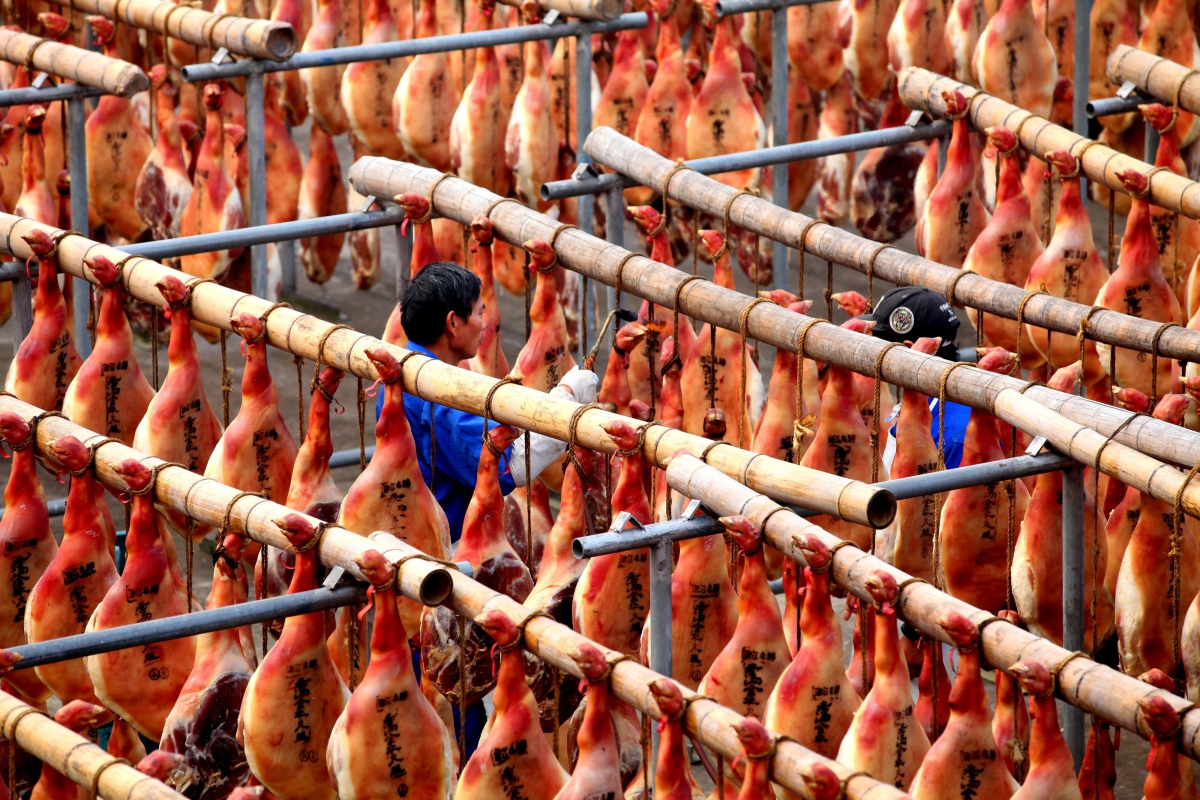
Jinhua is a prefecture-level city in central Zhejiang province in eastern China. It borders the provincial capital of Hangzhou to the northwest, Quzhou to the southwest, Lishui to the south, Taizhou to the east, and Shaoxing to the northeast. Its population was 5,361,572 at the 2010 census including 1,077,245 in the built-up area made of two urban districts (not including the satellite city of Lanxi, which has become essentially a suburban offshoot of Jinhua's main urban area).
Jinhua is rich in red soil and forest resources. The Jinhua or Wu River flows through the Lan and Fuchun to the Qiantang River beside Hangzhou, which flows into Hangzhou Bay and the East China Sea. In medieval China, it formed part of the water network feeding supplies to the southern end of the Grand Canal. It is best known for its dry-cured Jinhua ham.
The history of Jinhua dates back to the 2nd century bc, when it was a county subordinate to Shaoxing. It was given the name Jinhua under the Sui dynasty in ad 598 and later became the seat of a prefecture. The present city and its walls date to the time of the Mongol emperors in 1352.
Economically Jinhua has always prospered from its position as the regional collecting and processing center for agricultural and forestry products (chiefly rice and bamboo). It is currently the second most important grain producing area in Zhejiang. In 1985 Jinhua was promoted to City status, and now is responsible for administering four cities, four counties and a district. Animals raised there include dairy cattle, meat hogs (for the production of Jinhua ham, a famous local product for 900 years) and honeybees. Jinhua's industrial sector has developed more recently, producing machinery, metallurgy, pharmaceuticals, building supplies and electrical and electronic equipment.
There are numerous scenic and historical sites in the Jinhua region, including many places associated with the Immortal Huang, and a palace of the Dukes of the Taiping Heavenly Kingdom.
Jinhua enjoys an advanced civilian-owned economy, with its industry mainly supported by processing and manufacturing. Leading industries of the city include clothing and textile, mechanics and electronics, pharmacy and chemistry, manufacturing crafts, metalwork processing architecture and building materials, automobile-and-motorcycle accessories, food processing, and plastic ware.
Industries are distributed with different characteristics in different counties or county-level cities. For instance, Yiwu is characterized by its light-industry commodities, Yongkang by its automobile-and-motorcycle accessories and mechanical and electric tools, Dongyang by its clothing, architecture and magnetic materials, the Jinhua Proper by its pharmacy, construction materials and industrial measures, Lanxi by its non-ferrous metal, cement, towels and daily chemicals, and Pujiang by its textile, lockmaking, and lantern ornaments of crystals.
Traditional handicrafts have been flourishing in Jinhua. The wood carving and bamboo weaving in Dongyang, the straw plaiting, lace purling and crystals carving in Pujiang, and the hardware crafts in Yongkang, all enjoy a long history of development and the products sell well both abroad and at home.